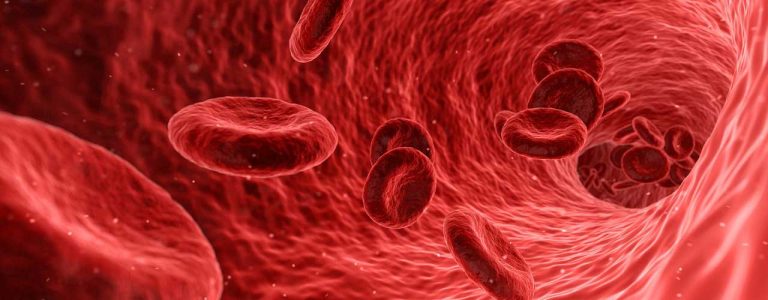Methamphetamine is a powerful stimulant that makes users feel alert and energetic. It is also highly addictive because it increases levels of a feel-good chemical called dopamine in the brain. When people try to quit meth, they find that they experience intense symptoms of meth withdrawal. Acute withdrawal symptoms include fatigue and depression.
If you or someone you love is addicted to meth, you may realize how difficult meth withdrawal can be. Anyone who wants to detox from meth is recommended to seek help from a detox and rehab facility. Medical specialists trained in addiction can supervise the process and treat the difficult symptoms of meth withdrawal, making it easier for the person.
How Common Is Meth Abuse?
Each year, the Substance Abuse and Mental Health Services Administration conducts a national survey on drug use and health. Survey results from 2021 show that methamphetamine is among the most commonly abused stimulants in America.
In 2021, 6% of respondents aged 12 or older reported that they had used methamphetamine in their lifetime, 0.6% said they had used it in the past month, and 0.9% said that they had used it in the past 12 months.
In the same survey, when asked if they had abused prescription stimulants, 1.3% said that they had done so in the past year, and 0.4% said that they had in the past month.
What Is Methamphetamine?
Methamphetamine is a powerful stimulant that affects the central nervous system. It was originally developed from amphetamine in the 20th century. Today, illicit meth is made in illegal laboratories using chemicals from over-the-counter medicines.
Meth makers also mix the substance with other drugs, including fentanyl and amphetamines. This means that when you buy meth from a dealer, you can never really be sure what you are getting.
You may encounter meth in two forms. It is sold as a powder and as crystal meth. Crystal meth has a crystalline structure and looks like shards of ice. Crystal meth is a more powerful stimulant than ordinary methamphetamine.
Meth Addiction
Methamphetamine addiction is difficult not just for the individual but also for the people around them. When a person engages in this form of drug abuse, it changes their behavior, causes them to neglect relationships and responsibilities, and puts their health at risk.
People find meth attractive because the drug produces an intense high. The euphoric feeling begins with a powerful rush of pleasure and then moves into a high that can last for up to 14 hours or more. Meth’s potency gives users a false sense of intense happiness, strong feelings of confidence, and hyperactiveness.
Meth is so addictive because it increases the amounts of the neurotransmitter dopamine in the brain. The main role of dopamine is to allow you to feel a sense of pleasure and motivation. When using meth, these feelings intensify to a euphoric level, and that is what leads people to repeat their use of it.
Over time, people develop a tolerance for meth and take increasing quantities to achieve the same effect, despite the negative consequences for their health.
Signs and Symptoms of Meth Addiction
When people use meth, they often report feeling full of energy. In addition, they may be less inclined to sleep and eat. Unfortunately, the consequences of abusing meth show up quite quickly and seriously affect a person’s health.
Some signs and symptoms of methamphetamine addiction are:
- Rapid weight loss from malnutrition
- Constant or intense scratching
- Irritability
- Uncharacteristic aggression
- Higher sex drive
- Unusual acne or skin sores
- Rotting teeth
- Paranoia
- Confusion and memory loss
- Increase in body temperature
- Damage to the cardiovascular system
A person with a meth addiction may struggle to engage in their former activities as drug abuse becomes the priority in their life. This could mean withdrawing from school, neglecting work, or not fulfilling responsibilities at home. Their life becomes dominated by meth use and looking for meth.
Why Does Crystal Meth Withdrawal Occur?
Currently, available research suggests that taking meth or crystal meth just once will not result in withdrawal symptoms. Meth and crystal meth withdrawal only occurs when the person has developed a dependence on the drug.
If you try to quit using crystal meth or meth and experience the start of a withdrawal process, this is a strong indicator that you have a substance use disorder.
When you keep taking crystal meth or meth, the substance alters the chemical makeup of your brain, tricking it into seeing the drug as a necessity to be able to function. Once that drug is removed from the routine, the body experiences extreme discomfort as a signal that it “needs” the drug to function normally again.
Timeline of Meth Withdrawal Symptoms
Every person’s experience of methamphetamine withdrawal is unique to them. The severity and duration of your symptoms will depend on the following factors.
- How you take the meth (e.g., snorting, smoking, injecting)
- Your usual dosage (the amount of meth used tends to increase as dependence develops)
- The purity of the meth you have been using
- How long you have been using meth or crystal meth
- Any co-occurring substance abuse and mental health difficulties.
The experience of withdrawal changes over time. The first stage of the withdrawal process can last up to two weeks. If you have questions about the meth or crystal meth withdrawal timeline, it is recommended that you speak to your healthcare provider.
Extended Withdrawal Symptoms
Later in the recovery process, some individuals may experience post-acute withdrawal symptoms, also known as PAWS. These can develop a couple of months after meth detox and last, on and off, for as long as a year. With PAWS, individuals may continue to experience intense drug cravings, severe depression, or other symptoms of meth withdrawal for some time.
Whether you experience protracted withdrawal symptoms will depend on factors unique to you, such as whether you have heavily used another drug. Alcohol abuse and mental health can also be risk factors.
The following meth withdrawal timeline outlines the meth and crystal meth withdrawal symptoms that are generally expected.
Typical Meth and Crystal Meth Withdrawal Timeline
The symptoms of meth and crystal meth withdrawal can be very unpleasant. Reading about the meth withdrawal timeline may tempt you to avoid a meth detox. Be reassured that you can get through it with medical support.
It is important to remember that addiction treatment facilities have years of experience in treating meth and crystal meth withdrawal. When you detox at a center, you will be monitored by medical staff who can ease your symptoms and help you adjust psychologically.
Phase One: The First 48 Hours
This phase of meth withdrawal is commonly known as the crash period. Individuals can experience fatigue, dehydration, nausea, sweating, chills, a fever, and abdominal cramping.
Phase Two: Days Three to 10
Meth withdrawal symptoms tend to reach a peak between three to 10 days after meth use has stopped. The person may have drug cravings, muscle aches, tremors, and fatigue. It’s also quite normal to experience depression at this stage.
Phase Three: Weeks Three to Four
Intense cravings for the drug may still be present, along with fatigue, mood swings, and depression. These meth and crystal meth withdrawal symptoms may continue for up to a month or more as the brain adjusts back to normal dopamine levels.
Treatment Options for Methamphetamine Withdrawal Symptoms
If you have had experience with meth or crystal meth withdrawal, you will know that quitting meth use on your own is very difficult. Methamphetamine is an extremely potent stimulant.
Going cold turkey at home is not recommended. Without help from experienced medical professionals, you are likely to struggle with the psychiatric symptoms and drug cravings that may appear.
You can make meth or crystal meth withdrawal easier for yourself by seeking help from trained healthcare staff. Mental health services and treatment facilities can offer you effective medical supervision during the withdrawal period.
Medically-Supervised Withdrawal
At an addiction treatment facility, you will receive an assessment so that the medical team understands your health and substance abuse history. The first treatment you then receive will be a medically-supervised detox.
While no medications have been designed specifically for meth withdrawal, you may be offered medications to ease physical symptoms such as nausea or sleeplessness. There may also be therapists on hand to help with any psychological symptoms.
Medically-supervised withdrawal treatment at a residential facility has many benefits.
- You can be monitored for any medical complications or mental health risks that may arise from severe symptoms.
- You get structured support so you can just focus on getting better instead of worrying about how you’re going to get better.
- You’re away from an environment that may encourage you to take meth again.
- Dietary specialists can help you with nutritional support since taking meth can take a huge toll on your eating habits and how your body absorbs nutrients.
Therapy for Recovery from Meth Abuse
The next step after the detoxification process is complete is therapy. Meeting with a therapist helps to treat the lingering psychological symptoms of meth withdrawal. It also helps the person to gain a deeper understanding of their reasons for meth abuse and to develop strategies for staying sober.
In rehab, you may encounter some of the following effective behavioral therapies.
- Cognitive-behavioral therapy (CBT): This is a very useful therapy that helps clients identify and change the unhealthy thoughts and behaviors that led to their substance abuse.
- Contingency management (CM): This treatment uses the principles of positive reinforcement or reward. A client will get tangible rewards when they reach their target (for example, a negative drug test after two months), or not receive a reward when they don’t meet their target.
Maintaining Physical Health
Methamphetamine use has a severe impact on a person’s health so it is important that a person eats nutritional food during recovery. In recovery, you may experience an increased appetite, which will help you to eat food containing the vitamins and minerals your body needs.
Here at Cornerstone in Southern California, we can give you the help you need in the methamphetamine withdrawal process. With our treatment, you can get through crystal meth withdrawal symptoms and move forward in your recovery.
Our team has years of experience. Cornerstone has been running a meth and stimulant detox program since 1984. We understand that many meth users also take other drugs and alcohol. We have the expertise to help you get clean and say goodbye to substance abuse.
Some of the mental health services we have on offer for meth addiction treatment are:
- Medically-assisted detox treatment
- Individual therapy
- Group therapy
- Relapse prevention therapy
- Inpatient and outpatient treatment
We understand that recovery from meth withdrawal is difficult, and that’s why our qualified team will always be available to make sure you’re getting the right care for you.
If you’re worried about your own use of meth or you have a loved one who needs support, don’t hesitate to contact us today! We are happy to answer your questions about our treatments for drug addiction.








